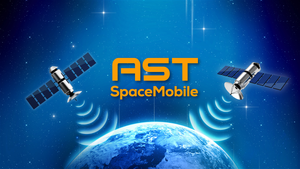Despite being one of the most technologically advanced nations on the planet, a lot of rural areas in America still have very limited connectivity options, with satellite internet being the most common one.
That begs the question: can satellite internet support the various needs of households in such areas, such as the highly data-intensive 4K streaming, for example? That’s what I’m here to explore.
In this article, I’ll dive into whether or not satellite internet can support 4K streaming in rural areas by exploring the following aspects:
Satellite Internet Technology and Components
Satellite Internet Connectivity – The Action Behind the Scenes
Low Earth Orbit (LEO) Satellites vs High Earth Orbit (HEO) Satellites
The Pros and Cons of Satellite Internet
Pros of Satellite Internet
Cons of Satellite Internet
4K Streaming – What Does it Require?
Low Latency
Higher Bandwidth
Higher Download Speed
Satellite Internet for 4K Streaming – Yay or Nay?
Let’s get to streaming, shall we?
Satellite Internet Technology and Components
Before we dive into whether satellite internet can allow seamless 4K streaming, it would help to understand what this type of internet is and how its various components play a role in making connectivity possible for rural areas.
Satellite internet, like the name suggests, is a type of internet that uses orbiting satellites to provide connectivity in rural homes.
This could be one of two types of satellites: High Earth Orbit (HEO) or Low Earth Orbit (LEO) satellites. However, more and more providers are shifting towards LEO satellites for reasons that will be explored later on.
Beyond the satellites, the components mentioned below are also in play:
- Satellite Dish: This works as both a receiver and transmitter that connects your home to the satellite. It does, however, require a clear and barrier-free view of the sky.
- Orbiting Satellite: The satellite in space that receives and passes on signals from your dish to the Network Operations Center (NOC). This could be high or low orbiting, as I mentioned earlier.
- Network Operations Center: This is a land-based control station that manages the entire satellite internet network to ensure performance in connectivity.
- Modem and Router: These devices are placed in your home to receive signals from the NOC and pass them to your devices.
Using these components, satellite internet providers use the process shared next to provide connectivity in rural areas.
Satellite Internet Connectivity – The Action Behind the Scenes
Below is a step-by-step breakdown of the process behind satellite connectivity:
- Device-to-Modem: When you access the internet, your device sends your modem a request.
- Modem-to-Dish: Your modem passes this data to the satellite dish installed above your home.
- Dish-to-Satellite: The dish sends these signals to the orbiting satellite.
- Satellite-to-NOC: The satellite passes the signals to the ground-based NOC.
- NOC-to-Internet: The NOC processes the information and sends it back to the intended destination on the Internet.
- Return Path: The requested data is then shared with your device using the steps above, but in backward order, that is NOC to satellite, satellite to dish, and from the dish to your device.
The process above uses two forms of satellites: low orbit and high orbit. Now let’s take a deeper look at both these types of satellites and how they differ in terms of performance.
Low Earth Orbit (LEO) Satellites vs High Earth Orbit (HEO) Satellites
As the name suggests, High Earth Orbit satellites are those that are in orbit further away from the Earth, whereas Low Earth Orbit satellites are the opposite. This difference in distance also results in a difference in performance on the following aspects:
- Speed: Since LEO satellites are closer to the earth, they don’t have to transmit data over very long distances, improving the speed of data transfer.
- Latency: Latency is the time it takes for data to move from a source to a destination, and the lower it is, the better. This is also lower with LEO satellites since the distance is less.
These improvements are why more and more providers are implementing LEO satellites. For rural areas, this new form of satellite internet can deliver a mix of benefits and challenges, the most significant of which are explored in the next section.
The Pros and Cons of Satellite Internet
Rural areas are often not very profitable to develop a connectivity network in, for reasons such as a low population and a lack of the ground-based infrastructure needed.
For example, fiber internet providers may have to invest in expensive equipment such as fiber cables, and since they can’t cover the costs, they aren’t investing.
Pros of Satellite Internet
Satellite internet helps overcome such rural connectivity challenges by offering the benefits shared below:
- Larger Availability: The infrastructure requirements of satellite internet are much lower compared to other forms of connectivity. Beyond the satellites, there is an NOC and your router and modem. By overcoming the need for land-based infrastructure, satellite internet can reach a larger number of areas, such as rural areas.
- Reduced Network Congestion: As per various FCC (Federal Communications Commission) reports, satellite connectivity can deliver speeds even if there is a large number of users on its network.
- Connectivity During Disasters: Natural disasters can damage ground-based infrastructure, which can prevent connectivity during this crucial time. Since satellite internet doesn’t rely on land-based infrastructure, it can keep you connected in such situations, which I hope you never have to face.
- Quicker Recovery Time: Other types of internet connections, such as fiber or cable, need tangible equipment, which can face wear and tear, resulting in low to no connectivity. Repairing them can also take a while, but with satellite internet, you only need a clear sky, and it can instantly resume your online activities.
Sadly, there are some cons as well, the most notable of which are mentioned next.
Cons of Satellite Internet
Don’t let this discourage you from thinking that satellite internet might not support your streaming needs, this is just how it performs compared to other current connectivity options, such as fiber.
- Slower Speed: Even with a LEO satellite, the max speed you can get out of a satellite internet connection is 250 Mbps, which is much slower than fiber.
- Higher Latency: Satellite internet networks, because of their very nature, will always have a higher latency compared to ground-based connectivity solutions such as fiber, because of the distance being higher.
- Data Limits: Some providers, especially those using high orbit or geostationary satellites, put data caps on their networks. Once you exceed this, you’ll be charged extra or face issues like throttling, which is when your provider deliberately slows down your connection to prioritize customers who haven’t hit the data cap, or to cope with network congestion.
Now that you’ve learnt all you need to know about what satellite internet is, what it can offer, as well as certain challenges, let’s see if it is the right fit for all your 4k streaming needs.
4K Streaming – What Does it Require?
Understanding a bit about what 4K streaming requires out of an internet connection can help you better understand if satellite internet in your area is up to the task. It eventually boils down to the following factors:
- Low Latency
- High Bandwidth
- High Download Speed
Let’s dive deeper into each of these three.
Low Latency
Since 4K streaming needs large amounts of data to be transferred from a source to a destination, a lower latency is crucial for a decent experience. Ideally, you want a latency that is anywhere between 20 and 40 milliseconds, but if you’re live video streaming, you want it to be under half a second.
Higher Bandwidth
Bandwidth is the maximum amount of data that a network can transfer, and the higher this is the better. Think of it like a highway, the larger the number of cars it can fit, the less the chance of a traffic jam.
Higher Download Speed
Download speed refers to the amount of data that can pass between two sources at any given time. For 4K streaming, you want this to be at least 25 Mbps (Megabits per second). If, however, you have simultaneous users in your home, you want this to be around 50 to 100 Mbps to prevent any lag or delays.
Let’s take a look at how satellite internet delivers, considering the factors shared above.
Satellite Internet for 4K Streaming – Yay or Nay?
Considering all that we’ve discussed above, I’d have to pass the verdict that yes, satellite internet can support 4K streaming. This is because of some solid reasons, which are:
- It Delivers the Needed Speeds: Like I mentioned above, the minimum speed needed for 4K streaming is 25 Mbps, and low orbit satellites can offer up to 250 or 300 Mbps, which might be enough for a home with multiple users too.
- The Latency Is Unnoticeable: Even though satellite internet has a higher latency compared to other forms of connectivity, when it comes to streaming, it’s unnoticeable. Low orbit satellites have further reduced this to support 4K streaming in rural areas.
- LEO Providers Have No Data Caps: Low orbit providers such as Starlink, for example, have no data caps on their plans. Talk about smooth and unlimited streaming!
Satellite Internet – Enabling Quality 4k Streaming in Rural Areas
While fiber has a long way to go in reaching rural homes, satellite internet is enabling seamless 4K streaming experiences and more in such areas. It is also consistently evolving, and some advancements, such as those below, can further smooth out 4K streaming in rural areas.
Some of these include:
- Shifting to Higher Frequency Bands: Providers are shifting towards high-frequency bands, such as Ku-Band, Ka-band, or V-band, and this can increase the bandwidth of their connections.
- Allowing Satellite Communication: Providers are using laser links between satellites to create advanced constellations. This can reduce reliance on the NOC and overcome physical barriers such as natural landscapes.
- Using Phased Array Antennas: This one’s for the end user. Phased array antennas are flat and electronically controlled devices that can replace the need for a dish. They’re easier to set up and much more practical for both consumers and providers.
- Improving Satellite Processing: Many satellite internet providers are using Artificial Intelligence (AI) to improve their satellite network’s processing power. Through AI, satellites can support a high number of users while adjusting to unexpected conditions.
With these upcoming changes, rural areas may soon enjoy a level of quality across various activities that is comparable to other forms of connectivity. Such progress might also help reduce the digital divide that our country still faces.





